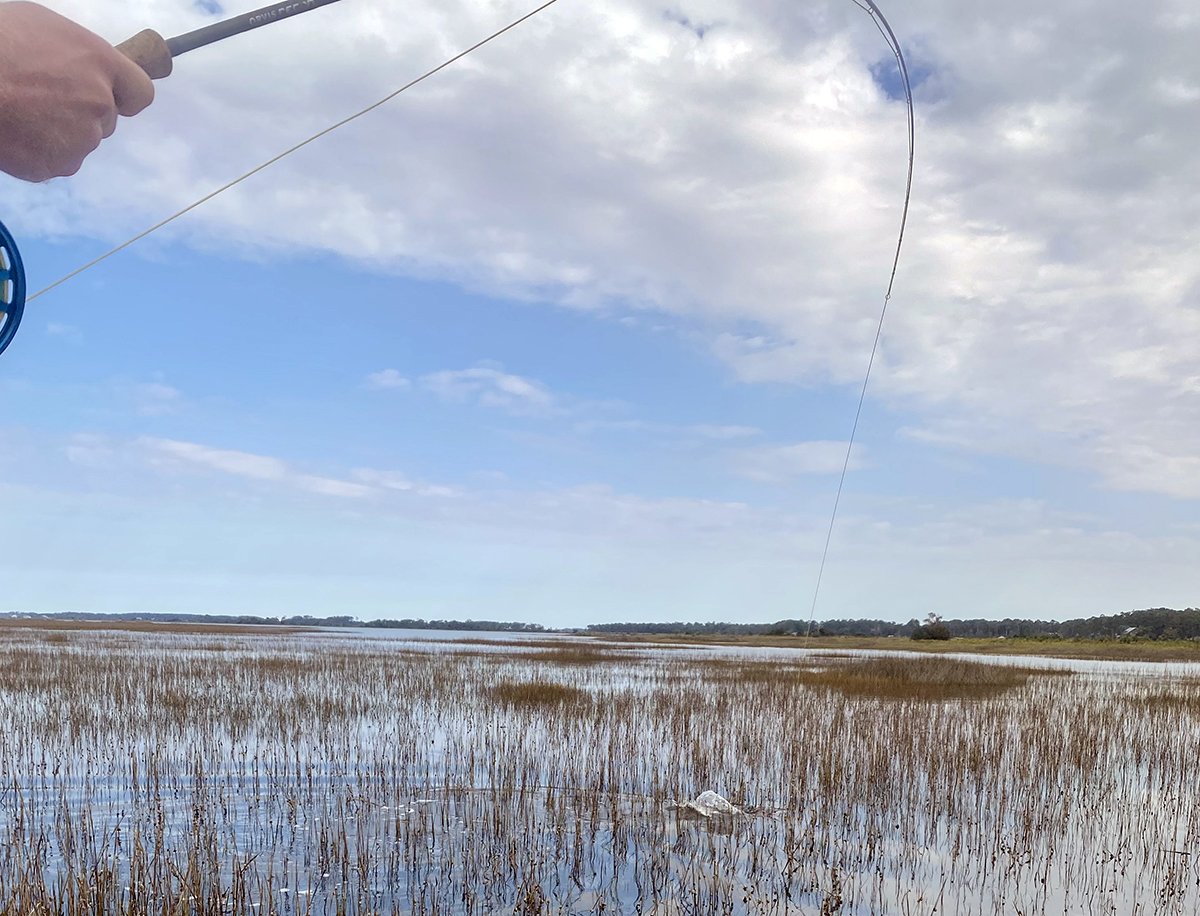
Traffic rounds the Wilmington Interstate 40 Bypass like a NASCAR final lap but not fast enough to outrun the fish stock start time. I ignore my constantly dinging phone. For sure, it’s Trey Herring texting as I rally toward the backyard where a 10-gallon soup pot waits on me.
As I peak 85 mph, my phone rings, and I pull over. “How long? Are you close? We need to get moving.” Trey speaks hyper-impatiently, like someone is tapping a Timex over his shoulder.
Supporter Spotlight
That someone is Herring’s close friend, Capt. Steve Jolley, a seasoned angler and cook from Washington, N.C., who Herring told me weeks before is “true to the ways.”
“When I cook with him, I feel like I’m cooking with my grandparents,” Herring had said.
Today, the men are preparing a sacred Eastern North Carolina dish: fish stew, better known to the unenlightened as “that soup with the eggs on top.” Fresh fish mingles with a holy trinity of potatoes, onions and bacon. Tomatoes plus each cook’s secret spice blend, often just salt and black pepper, season the basics. During the final minutes of cooking, eggs are cracked over the steaming stew.
For an outsider like me, being invited to “a fish stew,” which describes both dish and event, is a sign of acceptance in communities that keep the ritual. Showing up late is akin to stumbling into church halfway through the sermon. So, I arrive ashamed to see Jolley has already lowered the frame of a mighty red drum into the pot.
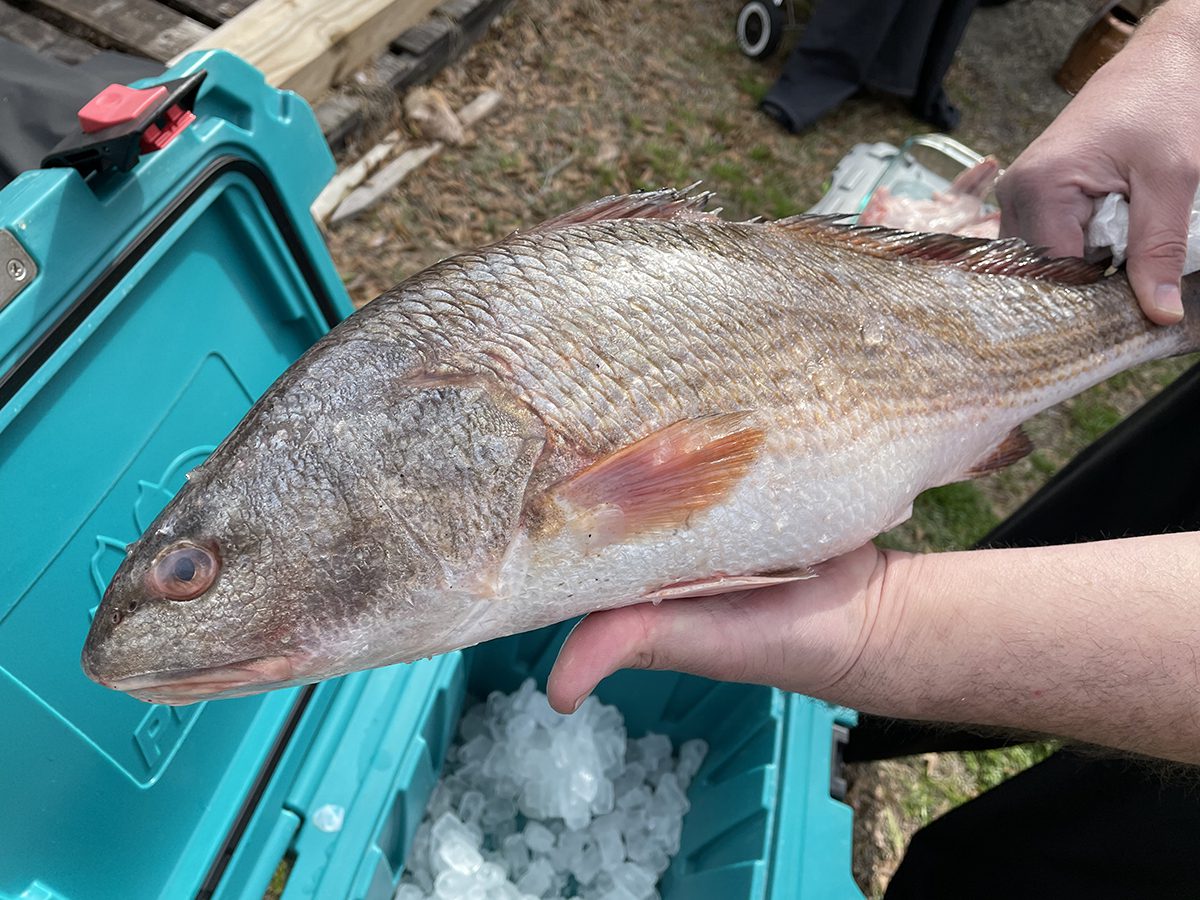
Fish stew requires a precise, step-by-step process stalled for no one.
Supporter Spotlight
I take my licking in the form of a Capt. Jolley silent treatment. Herring, a Goldsboro native blessed with a grandma who made him fish stew on demand, tempers my guilt.
“The stock is the most important part,” he explains. “It has to simmer for the right amount of time to impart a deep flavor rather than a watery foundation.”
Jolley adjusts the gas cooker’s fire and scurries inside to the kitchen. With the stock finally underway, he unwinds, and, alongside Herring, settles into a rhythm of chopping other ingredients.
Born to parents from Hyde and Beaufort counties, Jolley tells me that he hails from a long line of fish stew makers. Any occasion could be a reason for fish stew. Chilly spring nights, card games, birthdays. Jolley’s recipe is “just a mix of watching people cook stew.”
“I try to keep a stew like it’s always been done.”
In the beginning
People have been simmering fish stews over open fires for centuries. Scientists discovered well-preserved traces of marine fish and shellfish fats in 15,000-year-old Japanese cooking pottery.
Many countries boast signature fish stews that began as fishermen cobbling together a meal at the end of their workdays or families making the most of what they had: saffron-laced French bouillabaisse; hot and sour Thai tom yum; coriander-laced Portuguese caldeirada; and spicy Malay fish head curry, to name a few.
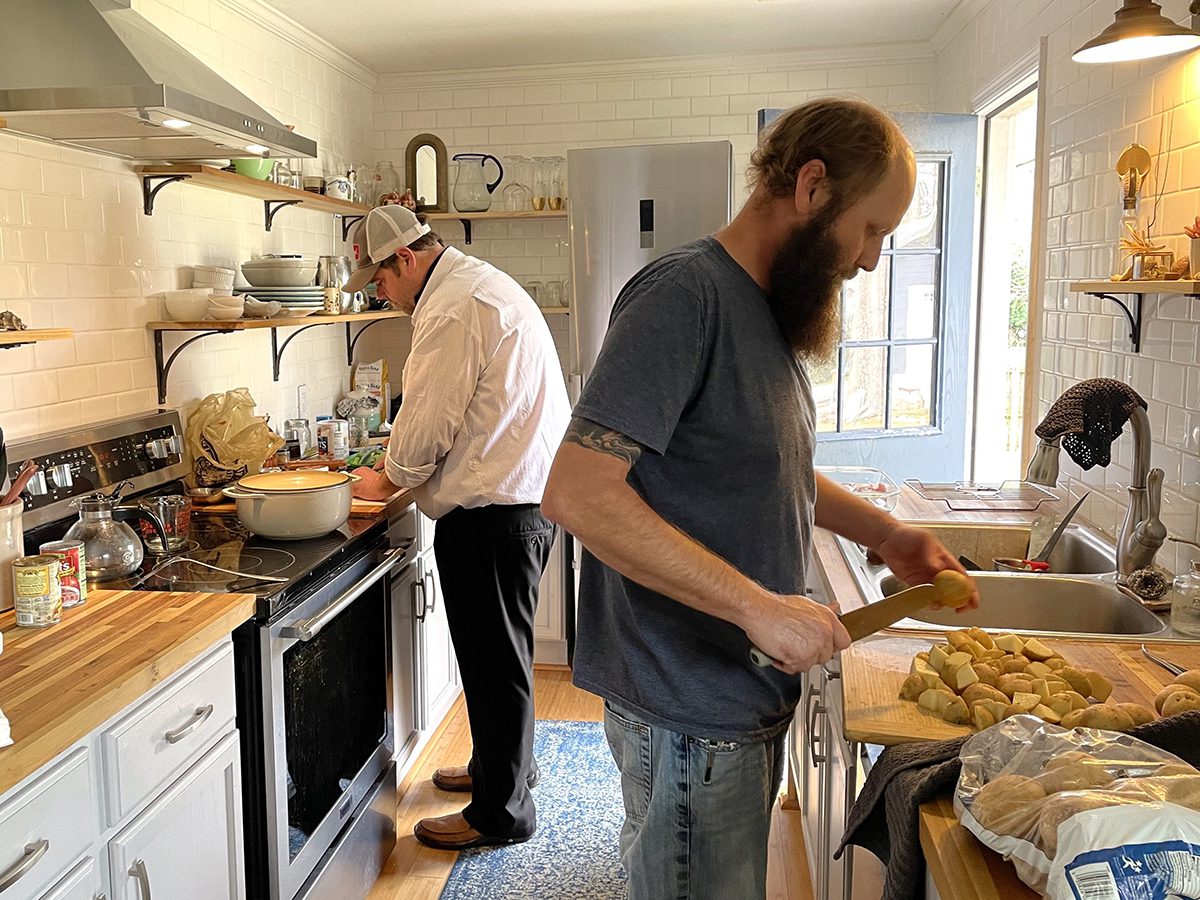
Early English settlers often get credit for inspiring Eastern North Carolina’s fish stew, but diverse hands contributed to the pot.
“I want to know who put the tomato soup in it,” seafood chef Ricky Moore says.
At his acclaimed Saltbox Seafood Joint in Durham, Moore celebrates African American influences that shaped the coastal N.C. cooking he grew up with in New Bern. Moore has seen assorted fish stews: potatoes and no potatoes, tomatoes and no tomatoes, smoked turkey necks instead of salted pork and the cornmeal dumplings that Moore himself adds to fish stew.
North Carolina’s seafood chowders and stews are customarily simple — just onions, potatoes and seafood, maybe bacon, although some think the pork overrides the seafood’s flavor. Tomatoes did not take hold in America until the early 1800s. By then, the Spanish, Italians, Portuguese and French were all putting tomatoes in their fish stews. Moore suspects N.C. cooks who followed suit with fresh or home-canned tomatoes found a shortcut in commercially canned tomato soup first sold in 1897.
Fish stew modifications have also combined taste, creativity and ego, especially at church socials, the center of community life and the place where people showed off their cooking skills in North Carolina’s once-isolated coastal plain.
“Different churches would have fish stews,” Herring recalls from his childhood. “They do barbecue, they do chicken and they do fish stew. That was kind of the three seasons of the church fundraiser.”
The most blatant adjustments happen at the Shad Festival Fish Stew Cook-off, where cooks battle every February in Grifton.
“I got one guy that cooks it, and he puts a lot of sausages in it. And saltwater mussels. He must put $150 worth of stuff in it … It almost wasn’t fish stew,” cook-off organizer Tommy Sugg says. “I tasted it. I liked it,” but share that opinion with aficionados of the traditional stew and “you could be tarred and feathered,” Sugg adds, laughing. “These people are pretty serious about it.”
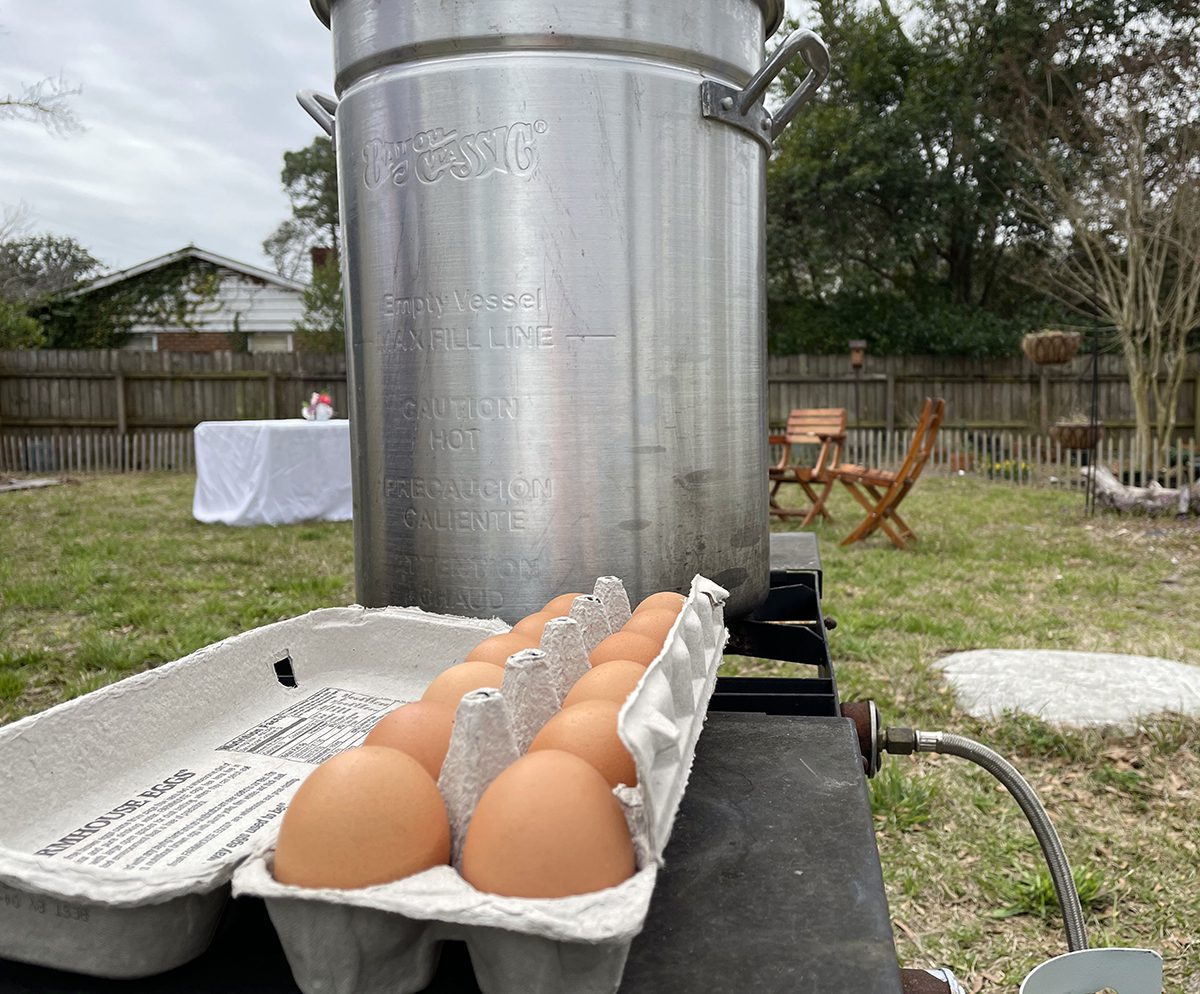
Variations didn’t surprise Sharon Peele Kennedy, who chronicled historic N.C. seafood recipes and created new ones for her cookbook “What’s for Supper with Sharon Peele Kennedy.” Tinkering dates way back, before supermarkets and gourmet stores.
“They used what they had. Potatoes, peppers, onions. What grew in the garden,” Peele Kennedy told me at her Hatteras home before she passed away in January 2024. Eggs from the henhouse added extra protein to nourish hard-working families when fish harvests were slim.
The cardinal sin
Both native North Carolinians and newcomers to the state brag about attending fish stews. The unanointed dream of landing in a backyard like Jolley’s to see if eggs really do float on top and witness a coastal N.C. tradition disappearing as quickly as undeveloped waterfront property.
No matter which recipe lucky attendees may encounter, they’ll witness one steadfast conviction: Nobody stirs the pot.
“Really, the hardest I’ve ever seen a man get hit was when he walked up to a pot of fish stew and stirred it. And he got knocked right off his feet,” Jolley says.
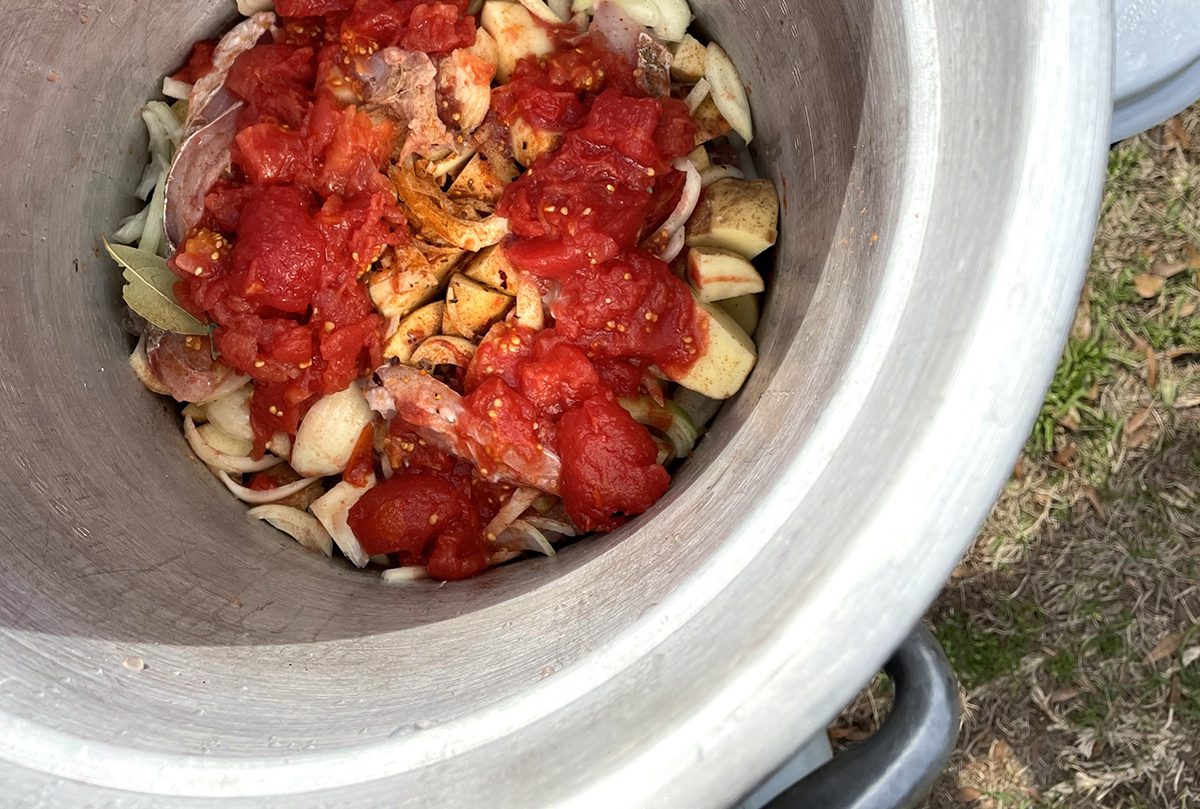
Eastern North Carolina fish stew harmonizes fish and potato chunks as large or slightly larger than a soup spoon. If whole fish are used, they must retain enough shape so that diners can easily pick the bones. Cooks layer ingredients in a heavy stock pot set over a low flame, a combination that ensures nothing at the bottom of the pot burns. Stirring crumbles components, consequently ruining the stew’s integrity.
I ease away from the cooker as Jolley and Herring begin building their stew, enough for 20 people. They use 8 pounds of drum, 5 pounds of white potatoes, 3 pounds of sliced onions, 1 pound of diced bacon, 2 quarts of home-canned tomatoes and that essential fish stock.
To make the stock, Jolley poached the drum’s boney frame with bay leaves in about two gallons of water for nearly two hours. He renders diced fatback in another huge kettle.
Next, he and Herring lay sliced onions over the fatback, then potatoes, fish and tomatoes. They repeat the process before Herring scatters sliced potato rounds all over the top to “seal everything down.” Jolley pours in the steaming-hot fish stock to cover everything by a few inches.
The seasonings? “That’s a secret,” Jolley says, although both men agree salt, pepper and red pepper flakes are essential.
The stew cooks covered for about two hours. A smaller batch might take one hour, Herring says. “The longer you let it simmer, the better off it’s going to taste. It doesn’t over cook because you’re not letting it sit there and boil. Barely bubbling,” Herring emphasizes. “Then you drop a few eggs and it’s time to eat.”
How many eggs? “At least a dozen,” Herring advises, then corrects himself. “At least two dozen, depending on the size of the fish stew, because, I mean, the egg’s the prize of the fish stew.”

Jolley likes yolks on the soft side, but he says yolks are usually cooked through. “Because a lot of times, it’s kind of one of those things where it is ready, but everyone is still kind of shooting the shit, taking some shots of liquor until someone says, ‘Oh yeah, let’s eat.’”
Herring passes around a bottle of bourbon. Before long, fish stew opining and storytelling begins. Guests debate if fish heads make better stock. They recall old-timers who shunned filets for fish on the bone. Remember that guy who agreed to bring the fish and then showed up with six cans of salmon? Eyes roll. Oh, and those housemates who kept freshwater bowfin alive in the bathtub until it was time to use one for fish stew.
Moment of enlightenment
Banter quiets when Jolley starts setting up a buffet. Cornbread, obligatory with fish stew, is hush puppies Jolley fried in a cast-iron skillet passed down from his grandmother to his mother and then to him. Creamy, old-fashioned slaw fades green to white, nary a fleck of fancy purple cabbage or orange carrot. Sweet iced tea fills tall Ball jars. Lemon pie’s lightly toasted meringue peaks so correctly that Jolley’s ancestors are surely singing praises from on high.
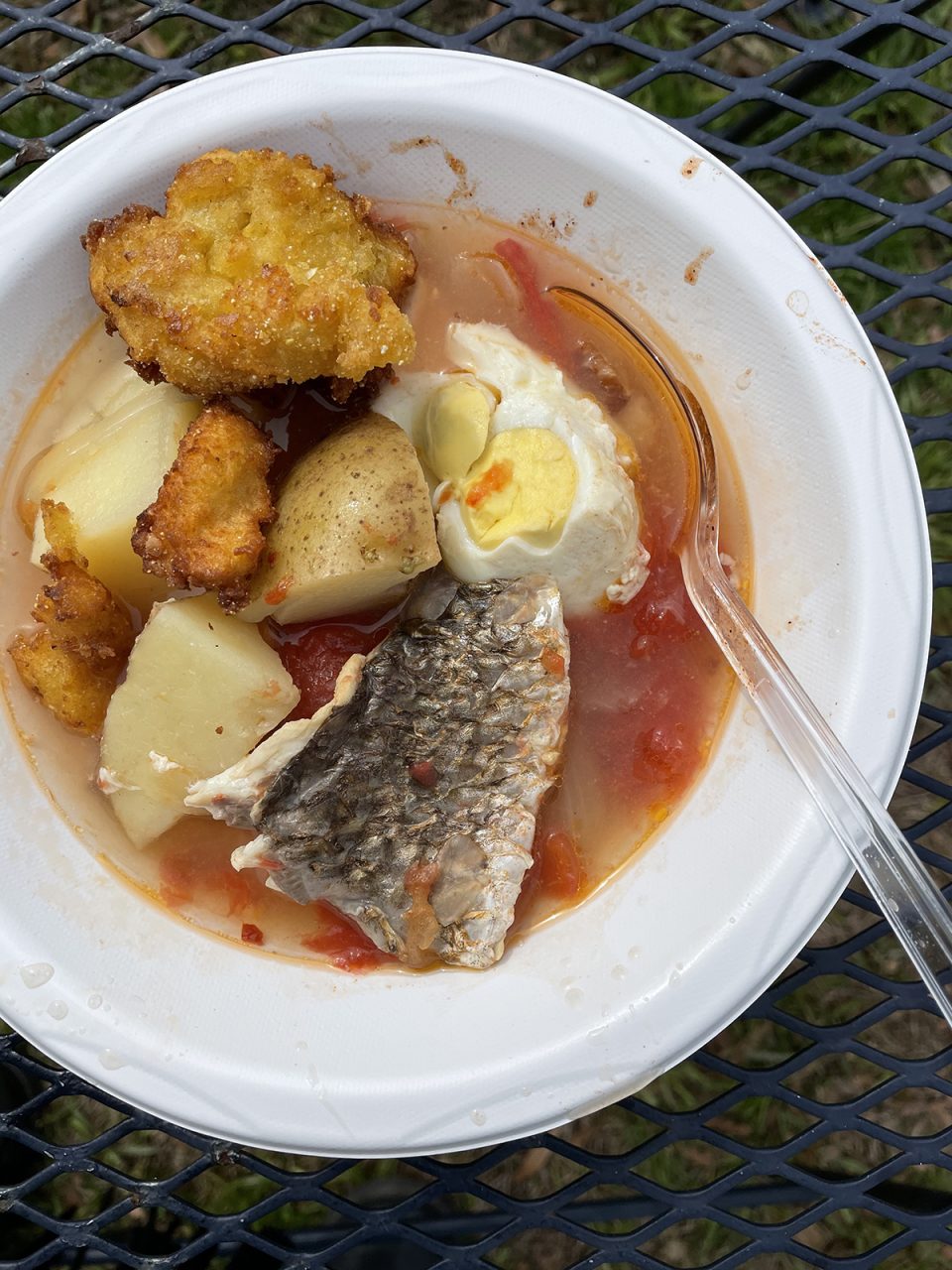
Finally, he dips a wooden ladle into the stew’s layers, releasing heavenly aromas. As each guest steps up to the pot, Jolley asks “Would you like eggs?”
“Pardon?” one man replies.
“Would you like eggs?”
“Um, Sure.”
Herring chuckles. “That was a test,” he tells the hesitant gentleman. “If you would have said no, we would have kicked you out.”
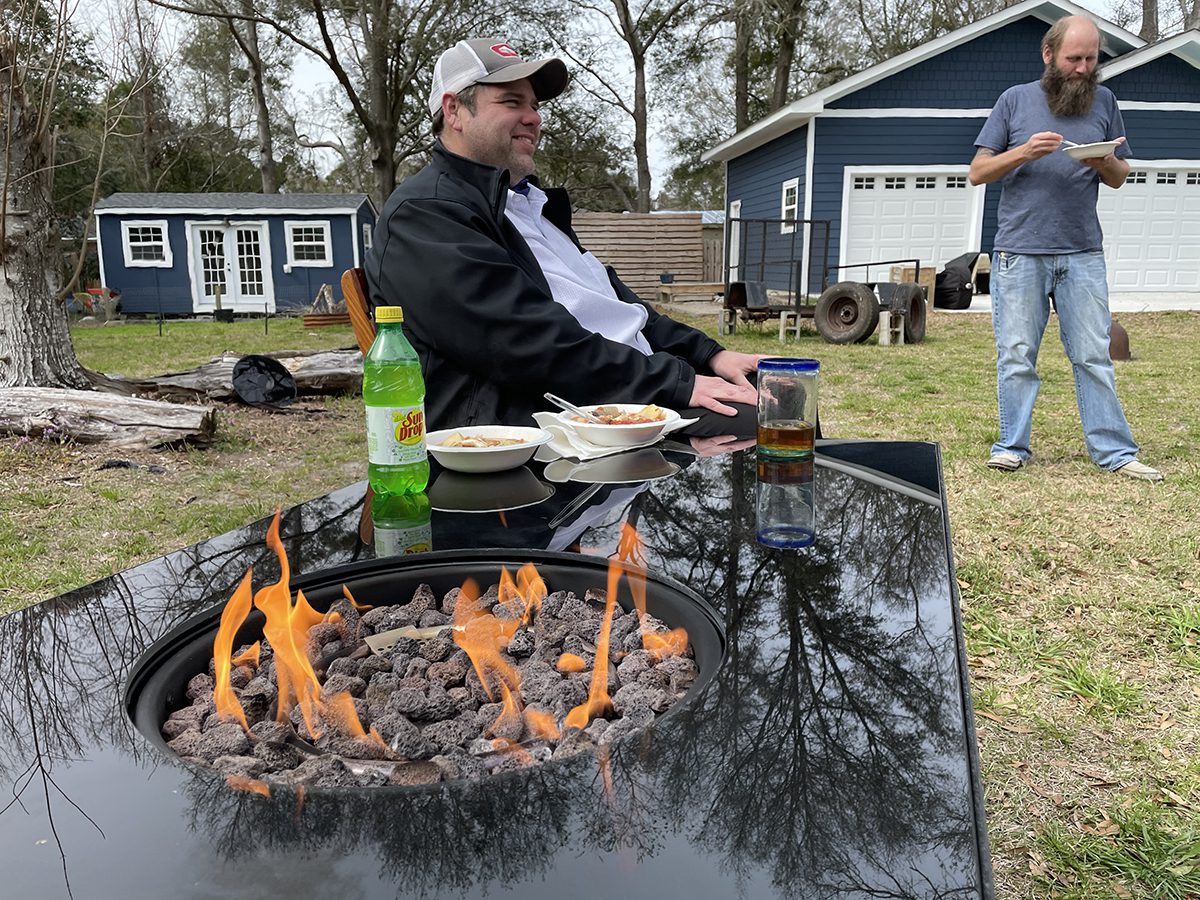
Soon, mms and mm-hmms join a chorus of cardinals in the trees. “And the great thing is it’s better the next day,” Herring says, adding only half-jokingly that the only thing he would have done differently is add more eggs.
Jolley smiles. “I’m sure it would be good if you put a bunch of ginger and turmeric in it, sort of drift from the traditional flavor, but at the end of the day…” Everyone gets his point.
While pie is served, Wilmington-based Folkstone String Band fires up its picks, bows and upright bass. Guests listen to old bluegrass songs in the contented silence of their own memories.
Like oyster roasts and shrimp boils, fish stew is “an art form passed down,” Herring says. “This is the only way you can continue to experience it and hopefully get somebody else that’s interested and wants to learn about it to do it. If you don’t, it dies.”






